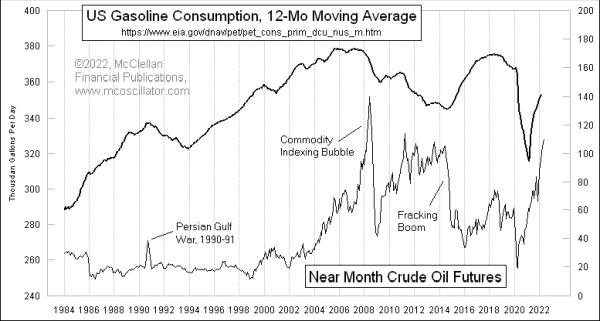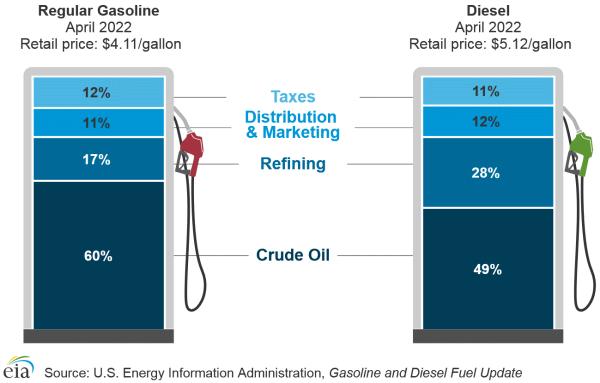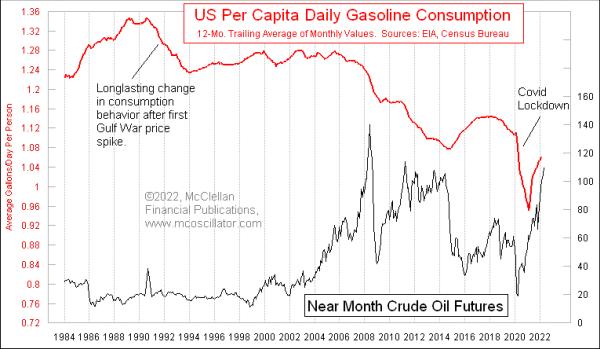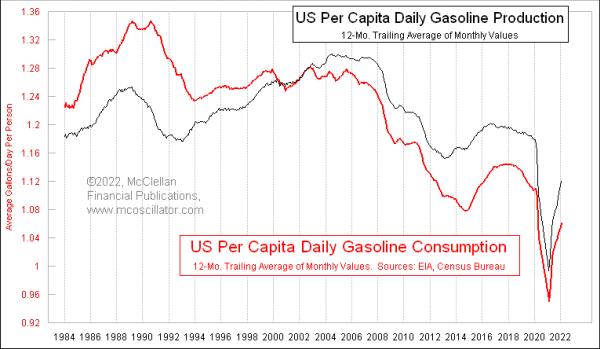
When we were all locked down for COVID in April 2020, total gasoline consumption in the U.S. fell to a low rate that month of 228 million gallons per day. That is the lowest single month reading in the EIA's dataset, which dates all the way back to 1983.
Consumption has rebounded since then, of course. This week's chart shows a 12-month moving average of that gasoline consumption data, with a comparison to crude oil prices. Not surprisingly, there is an inverse relationship between oil prices and gasoline consumption, although oil price changes over time do not explain all of the variation in gasoline use. And the recent rise in crude oil prices has still not yet stopped the rebound in gasoline usage, as Americans get back out to work and shop again. This is in part due to the point that crude oil is not the only cost factor in what we pay at the pump.

The change in consumption over time starts to look even more dramatic when we adjust for population growth in the U.S. Here is a chart showing the per capita daily gasoline consumption. I used a 12-month moving average to smooth out the annual seasonality.

The raw gasoline consumption rate for the entire U.S. peaked back in 2005. But on a per capita basis, the peak was in 1990. The doubling of oil prices that year when Iraq invaded Kuwait seems to have triggered the start of a long downward trend in the consumption data, as U.S. drivers modified their driving habits, switched to more fuel-efficient cars and now, more recently, have moved to a small degree into rechargeable electric cars.
One final point worth noting from the EIA data is that U.S. refiners are actually producing surpluses of gasoline, over and above what Americans use. The excess gets exported.

It used to be that the U.S. imported not only some of the crude oil that we use, but also refined gasoline. That began to change in the early 2000s, and now the U.S. is a net exporter of gasoline. This is due in part to the advantage the U.S. has in terms of cheaper natural gas prices, which helps bring down the cost of the distillation and refining processes. The production is still not back to the levels of a few years ago, in part because some refineries have been idled. Bloomberg reported this week that the White House is reaching out to oil companies to see about whether some of those mothballed refineries can get back into production again.
The March 2022 single-month reading for total U.S. gasoline consumption of 344 million gallons per day was just a hair above the 343 million gallons a day in March 2021, a year earlier. So we may soon be seeing U.S. consumption start to roll over, as the high oil prices start to bite and Americans get convinced to conserve even more.
